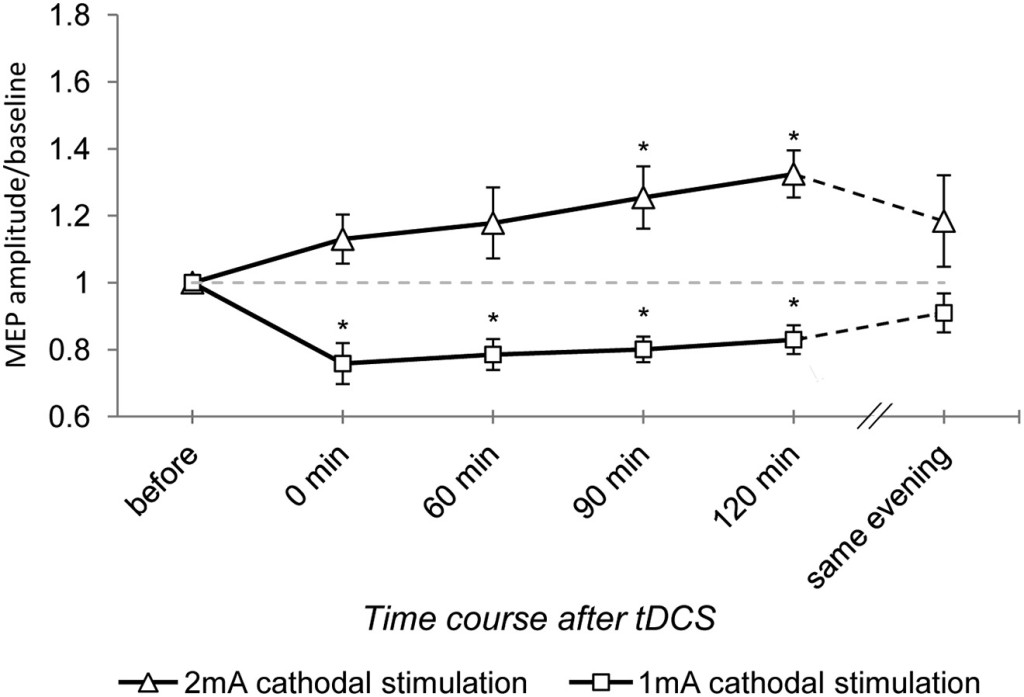
Effect of tDCS Current on Single-Pulse MEP (motor evoked potentials) Amplitudes This figure taken from Batsikadze et al. (2013)) shows that the “classic” inhibitory profile of 1 mA of cathodal DC stimulation is reversed when intensity is increased to 2 mA.
The Effects of tDCS Polarity. One of the features of the literature in tDCS cognitive studies is the implicit assumption that anodal stimulation is always excitatory and cathodal stimulation is always inhibitory (see Horvath et al., 2015a). Bestmann et al. (2015)) have given a detailed account of why this cannot be the case. It is broadly true that polarity-dependent tDCS changes are directional; however, the effects are not uniform under the electrodes (Batsikadze et al., 2013) and interactions with different cell morphologies and cortical surface shapes create inhomogeneities that in turn change the net effects of stimulation (Bestmann et al., 2015). This is one reason to approach the link between assumed physiology and behavioral effects with caution. It is an important message of this Primer that the field needs to stop making naive one-to-one links between polarity and behavior.
Source: Non-invasive Human Brain Stimulation in Cognitive Neuroscience: A Primer: Neuron
